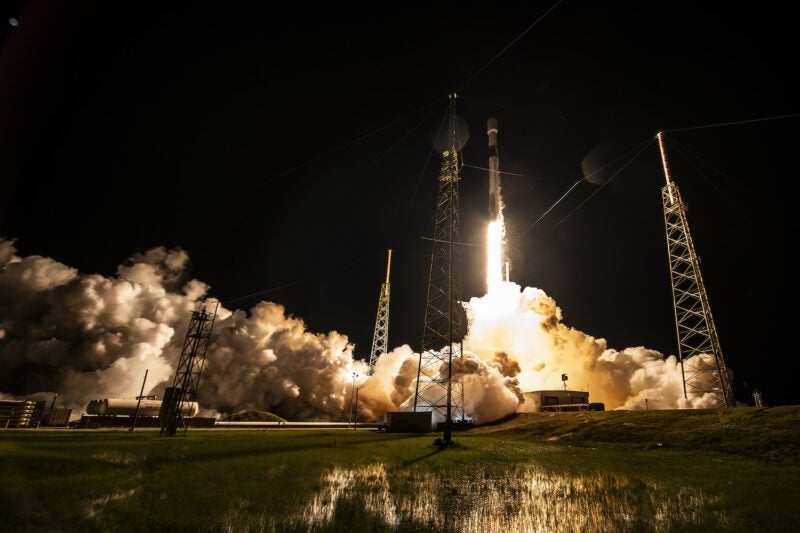Intelsat’s Galaxy 37/Horizons-4 Marks 40 Years of the Galaxy Fleet

SpaceX launches the Galaxy 37/Horizons-4 satellite early on August 3, 2023. Photo: SpaceX
SpaceX launched the Galaxy 37/Horizons-4 satellite for Intelsat in the early hours of Thursday morning. The launch marks a milestone for Intelsat — it’s the operator’s eighth Geostationary Orbit (GEO) satellite launched over a period of 10 months.
SpaceX launched the mission on a Falcon 9 rocket from Cape Canaveral Space Force Station in Florida at 1:00 a.m. EDT on August 3. Intelsat confirmed signal acquisition, and manufacturer Maxar Technologies confirmed the satellite is performing well.
G-37/H-4 has a C-band payload that will provide broadcast and telecommunication service over North America. The satellite also features a Ku-band payload jointly owned with Intelsat and JSAT International, the U.S. subsidiary of SKY Perfect JSAT. This payload will provide capacity for mobility, network, and U.S. government customers and marks 20 years of the partnership.
The launch completes Intelsat’s Galaxy fleet refresh with seven new satellites, and completes launches for Intelsat’s C-band clearing initiative.
Galaxy 37 marks 40 years of the legacy of the Galaxy fleet, which started with Hughes Communications, then was acquired by PanAmSat, and is now owned and operated by Intelsat.
The new Galaxy satellites bring more power and efficiency with improved technology in solar arrays and battery cells, Jean-Luc Froeliger, Intelsat’s senior vice president of Space Systems tells Via Satellite.
Although media in general is a declining market, the Galaxy refresh ensures reliable service for Intelsat’s media customers for another 20 years
“Those satellites have provided very good services to our media customers and every new satellite every new generation brings in more performance and technology,” Froeliger said. “Now we have a very strong, very young Galaxy fleet.”
The satellite was launched to a Supersynchronous Transfer Orbit, which is higher than Geostationary Orbit, Froeliger said. It will arrive at its position in GEO at 127 degrees West in about three weeks and enter service early in the fourth quarter.